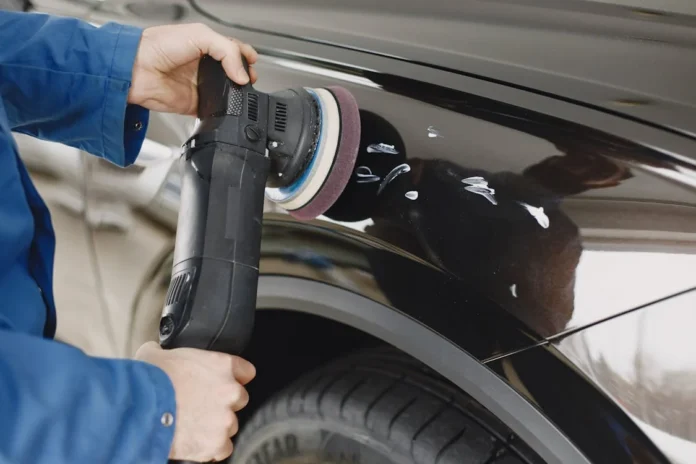Introduction
In the world of auto body repair, precision is everything. But what happens when the repaired section of a car doesn’t quite match the rest? Car paint mismatches and texture discrepancies are common issues that can leave both body shop professionals and car owners frustrated. Ensuring color and texture consistency isn’t just about aesthetics; it’s crucial for maintaining a vehicle’s value and customer satisfaction. This blog post will guide you through understanding the causes of these mismatches and how to achieve a flawless finish every time.
Understanding the Problem
Car paint mismatches can occur for various reasons, ranging from environmental influences to the techniques used during application. Environmental factors, such as temperature and humidity, play a significant role in how paint dries and adheres to surfaces. Even the type of lighting in a workshop can affect color perception, leading to mismatches that aren’t apparent until the vehicle is outside.
Texture discrepancies, on the other hand, arise from differences in the grain or smoothness of the paint surface. These variances can be influenced by the paint’s viscosity, the spray gun’s settings, and even the painter’s speed. The result? A car that looks like it’s been cobbled together from different pieces, detracting from the overall aesthetics and potentially impacting its resale value.
Steps to Identifying the Issue
For auto body shops, recognizing color and texture discrepancies is the first step toward resolving them. Begin with a thorough inspection of the vehicle under various lighting conditions, as natural and artificial lights can reveal different issues. Pay close attention to transitions between painted surfaces; any noticeable shift in color or texture should be flagged.
Effective communication with customers is also vital. Discuss potential challenges before starting the repair process to manage expectations. By setting clear terms and understanding customer concerns, you can preempt dissatisfaction and address issues upfront.
Solutions and Best Practices
Addressing paint and texture mismatches requires adherence to industry best practices. Choosing the right paint is paramount—opt for quality products that offer a wider range of color options and better blending capabilities. Invest in the right tools, such as properly calibrated spray guns and mixing equipment, to ensure a smooth and even application.
Professional training cannot be overstated. Continuous education helps keep your team updated on the latest techniques and products, reducing the likelihood of mismatches. Consider workshops and certification programs that focus on advanced color matching and application skills.
Case Studies and Examples
Let’s explore some real-life examples. In one case, an auto body shop faced a significant color mismatch after repainting a door panel. By reassessing the paint mix and improving their blending technique, they achieved a near-perfect match, restoring the car’s appearance and satisfying the customer. Another shop successfully resolved texture discrepancies by adjusting their spray gun settings and refining their application method, resulting in a smooth, professional finish.
Visual aids, such as before and after photos, can be invaluable in demonstrating the impact of these corrections. They not only serve as proof of skill but also as educational tools for staff and customers alike.
Future Trends and Technologies
The future of auto body repair promises exciting advancements in paint matching technology. From AI-driven color recognition systems to 3D printing of custom paint textures, new technologies are emerging to tackle longstanding challenges. These innovations will help auto body shops achieve unmatched precision, reducing the time and cost associated with manual color matching.
Additionally, advancements in paint materials, such as environmentally friendly options and enhanced durability coatings, offer new opportunities for shops to differentiate their services and appeal to eco-conscious consumers.
Conclusion
Achieving paint and texture consistency is a hallmark of quality in auto body repair. By understanding the underlying causes of mismatches and adopting best practices, auto body shops can enhance their service offerings and boost customer satisfaction. Continuous learning and adaptation to emerging technologies will ensure that your shop remains at the forefront of the industry. Whether you’re dealing with a small scratch or a full panel replacement, remember that precision and attention to detail make all the difference. Explore further resources and consider collaborating with industry experts to refine your techniques and stay ahead of the curve.

